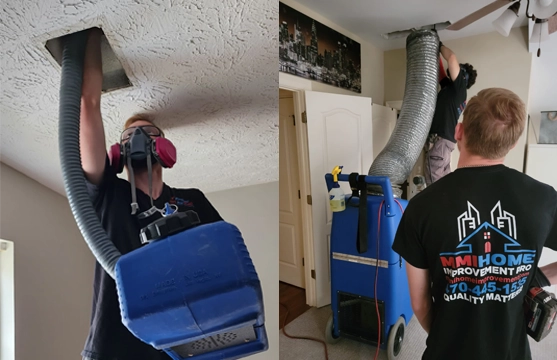
An office manager asks remote and hybrid workers to return to the office full-time, yet the building needs a new eco-friendly retaining wall to stop regular flooding. A construction manager secures a job where the structure requires strict sound management to optimise acoustics. These scenarios are only several circumstances contractors and construction workers might encounter.
Optimising noise control could be the secret to creating high-performing infrastructure that pleases clients. Decision-makers who neglect sound will experience adverse effects.
Compromised Occupant Health and Productivity
Masterful soundproofing can encourage better moods and higher focus in residents. Alternatively, low-quality installations lead to health and happiness reductions. One study observed the impacts of acoustic stimuli in senior care facilities. The high-decibel sounds altered their heart rate, among other physiological metrics. Controlling sounds to hover around 55 and 65 decibels improved residents’ blood pressure and heart rate, leading to greater comfort.
Subpar sound could easily disrupt sleep, heighten stress and compromise concentration if it is distracting and loud. Better soundproofing and insulation can manage the spread and clarity of louder sounds to have less negative influence on tenants. Construction experts should opt for lightweight varieties like mineral wool for their sound properties and ease of installation.
A fixture like an eco-friendly retaining wall can have a compound effect on health and soundproofing. Materials like vegetation or recycled options could soften outdoor noise like traffic. They will also protect people’s safety and health by being a barrier between noisy and damaging winds or rushing waters.
Reduced Property Value and Return on Investment
Imagine a property manager who receives daily noise complaints due to thin walls and poor sound isolation. The owner will see tenant turnover skyrocket from the inconveniences, leading to a reputation for high vacancy rates. Eventually, they will be unwilling to keep paying for the building because they cannot convince high-paying residents to stay there for long enough to recoup their investment.
This example is only one way building noise control components impacts quality of life. Eventually, it leads to losses and disinterest in the location. Construction professionals can prevent these concerns by considering how noise impacts every job and what will fit the needs of the residents or workers who use it regularly.
It also limits the tenants who could rent or purchase the property. A medical office or recording studio will not commit to a space without superior sound isolation. Builders can try adding hanging clouds or baffles for enhanced noise management. They complement the sound-control techniques in the building’s facade.
Code Compliance Issues and Delays
Numerous compliance frameworks require structures to consider soundproofing. While some may not associate noise control with sustainability, even the LEED certification requires it as a part of its indoor environmental quality criteria to get the enhanced acoustical performance credit.
Builders are more likely to get better noise management with intelligent material choices. For example, timber is a sound-absorbing material because it is porous. It can also have infill to make it even more effective. Timber frame construction has grown in popularity in the last 50 years because it is cost-effective and stylistically versatile.
Other building codes have standards for metrics like the sound transmission class and impact isolation class of materials based on location. Countless tools help workers measure the soundproofing method’s effectiveness in real time. Noise audits prevent dissatisfaction later.
A unit with multiple business tenants must ensure confidential client conversations cannot pass through any surface. If contractors fail to consider client needs, they will have to modify the area after the fact, causing operational disruptions, or delay project deadlines during construction.
Increased Construction Defect Claims
The client may have requested resilient channels to enhance sound dampening in interior walls. Instead, they see nails poking out of the drywall because they forget where to adhere the gypsum board. They could have also used the wrong screws or acquired cheap materials that failed to soundproof the area regardless of the craftsmanship. A review of concrete structures in Portugal discovered even the smallest defects led to a significant reduction in acoustic performance.
Building owners can assign blame to the construction workers for inadequate soundproofing. If they identify a work-related error, such as a design defect or code violation, it starts a long list of expensive and time-consuming work for builders.
They will have to rework the area, deal with legal battles and fees and spend time recovering from negative reviews. The reputation damage could cause a loss of competitive advantage and limit the building’s marketability.
Strategies for Saving Sound
Construction experts can rise above the side effects of amateur installations by recognising the importance of noise management. Variables like soundproofing, insulation and outdoor fixtures contribute to professional noise pollution control. Contractors must prioritise these techniques to keep their clients content. The attentiveness demonstrates care for the building’s future visitors.





























